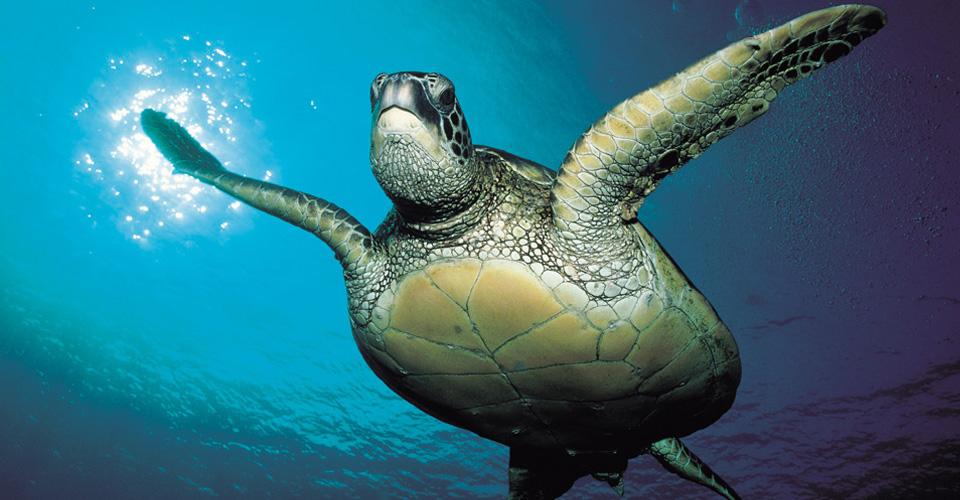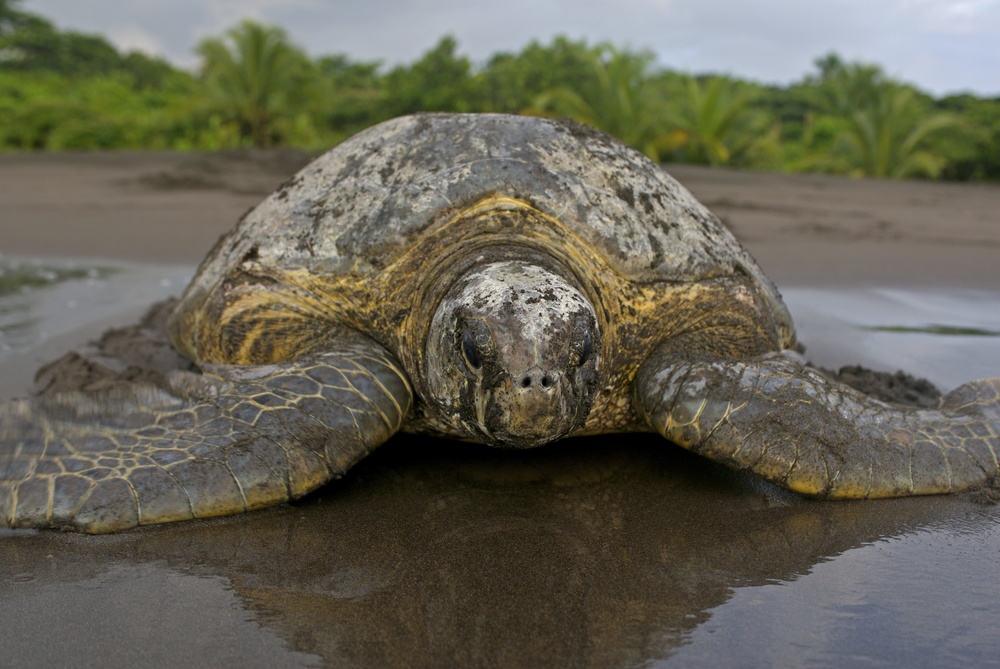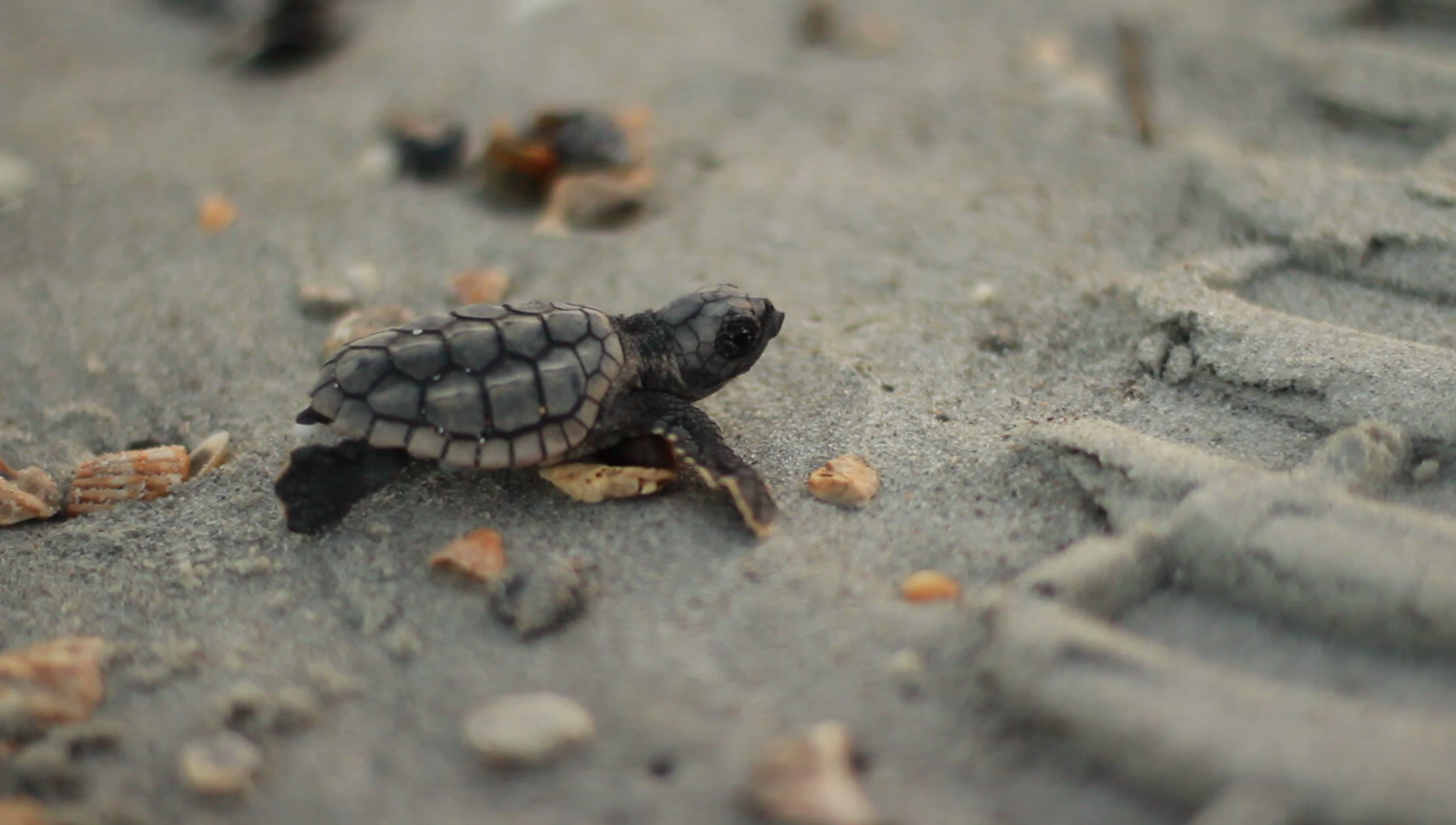Physics in the animal world: sea turtles and their "compass"

Sea turtles can swim hundreds and even thousands of kilometers in search of food. But when it comes time to lay eggs, they unmistakably return exactly to that beach, where they themselves were born. This fact has been known for many hundreds of years, but only recently it was managed to be explained. Sea turtles (lat. Cheloniidae) is a family of turtles from the superfamily Chelonioidea. This family includes large sea and ocean turtles, which have a streamlined heart-shaped or oval shell, covered with horn flaps, and non-invading flipper extremities.
Most species of sea turtles live up to 80 years. Sexual maturity comes in 30 years. At this time, females and male turtles return to the beaches, where they themselves were born. Females lay about 150-200 eggs in the sand, not too far from water. Sea turtles are known for being able to return to their native beach and many decades after birth. An olive sea turtle stands out here. Representatives of her species are massively returning to several beaches, where almost one day they lay hundreds of thousands or even millions of eggs. The Atlantic Ridleya turtle breeds at all on the only beach in the world located in Mexico.
Atlantic ridley (Lepidochelys kempii) is a species of ridley turtles, the individuals of which are the smallest and at the same time the fastest growing of the whole family of sea turtles. They live in the Gulf of Mexico and southwestern Florida. The species is listed in the IUCN red book and is threatened with extinction.
')
How are these animals oriented in space? As it turned out, turtles have sense organs that allow them to sense the Earth’s magnetic field and fix its configuration in native places. In the future, turtles return from these unique “snapshots” of the magnetic field. These animals are among the few species of living beings that are able to sense the magnetic field of the Earth, using for some of their needs. In addition to turtles, migratory birds, some species of fish, several species of insects and bacteria are capable of this.
The assumption that turtles may use the geomagnetic field for navigation has been expressed by different scientists at different times. Professor Kenneth Lohmann from the University of North Carolina at Chapel Hill decided to check if this was really the case. The problem was that the experts simply did not know which organ of the turtles could fulfill the role of a compass.
“Sea turtles swim many thousands of miles in order to return to the shore where they once hatched from the egg. For a long time we did not understand how they find their way back. We decided to check what role the Earth's magnetic field plays in this process, ”says Roger Brothers of the University of North Carolina at Chapel Hill.
Fortunately, marine fauna experts have the results of years of data for observing sea turtles. In particular, for about 20 years, scientists observed the movement of Caretta caretta sea turtles laying eggs on the east coast of Florida. These data, scientists have decided to compare with information about the magnetic field of the Earth for the same time.

The fact is that the Earth’s magnetic field changes its configuration from time to time. Using data on the dynamics of the magnetic field in certain regions of the planet, scientists tried to predict changes in the behavior of turtles. As it turned out, if the magnetic marks are shifted, then the density of the clutches changes. If the labels are closer, the density of clutches will increase, if further - decreases.
“Probably, returning to your beach for laying eggs can be called the best solution. The conditions here are optimal, ”the scientists said in a statement.
Kenneth Lohmann was also able to prove that not only adults, but also small turtles can analyze geomagnetic information. The fact is that the turtle, after falling into the water, must make a long journey. They need to get to the course that washes the Sargasso Sea. Here young individuals spend the first years of their life. If the little turtle makes a mistake and it does not go there, it can be carried to cold waters, where the sea turtle cannot live. They can also be picked up by the current, which will take them to the south, where living conditions are also not optimal. Therefore, for young turtles it is vital to be able to navigate.

In order to show the ability of turtles to use geomagnetic information, they were placed in a pool, which was influenced by a device that reproduced magnetic field lines. This setup allowed to form a different configuration of the magnetic field. If the magnetic field lines showed dodging north, the turtles swam south. If the configuration of the magnetic field was reversed - young turtles swam northward. According to experts, this is proof that during long journeys turtles from birth can work with geomagnetic data.
Of course, the danger to turtles is not only in choosing the wrong path. Crabs, coyotes, seagulls and many other animal species, not to mention humans, hunt eggs of turtles and turtles. Birds, sharks and humans also hunt turtles of different ages. True, the main impact on reducing the population of sea turtles is still not animals, but people.
Source: https://habr.com/ru/post/372769/
All Articles